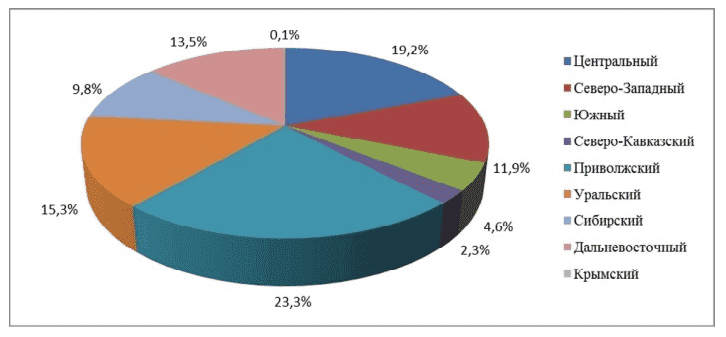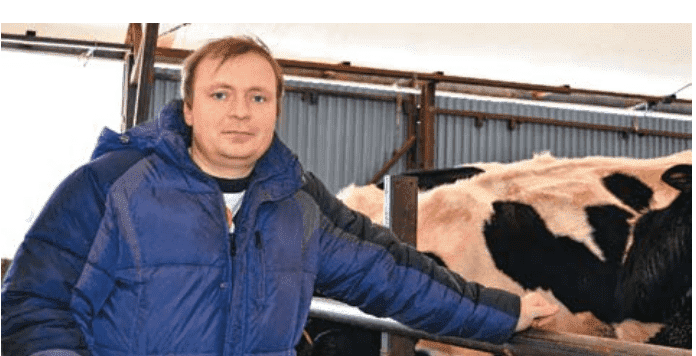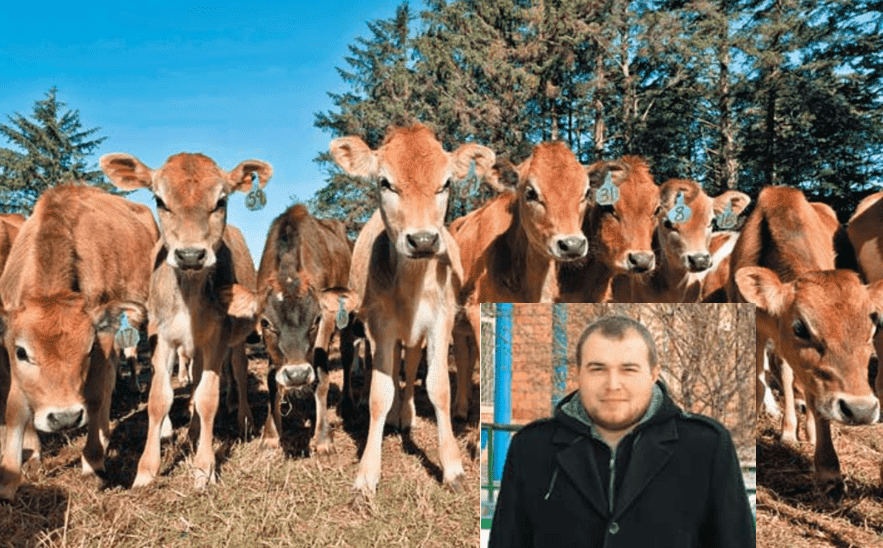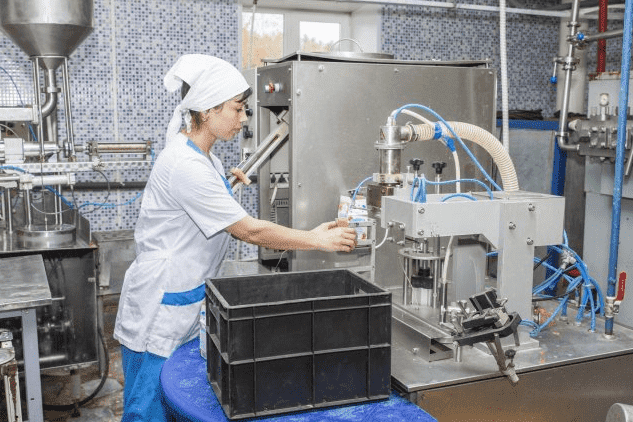Dairy farm in numbers: relevance, profitability, prospects
Demand for raw milk in Russia exceeds supply. The profitability of production in the southern regions of the country reaches 37% in 3-5 years after the start of the farm and the repayment of loans.
For a long time, milk production in Russia was considered profitable only for large agricultural complexes. The constant shortage of raw materials has forced processors to pay attention to small producers, moreover, they offer goods at competitive prices and of higher quality. The dairy farm as a business for small entrepreneurs and peasant farms has become especially attractive after the introduction of state support.
To assess the prospects of investing forces and resources in this labor-intensive and difficult production, consider:
- product demand, market trends;
- FEO of opening a dairy farm;
- manufacturer support programs;
- examples of successfully operating peasant farms.
Brief overview: how much milk you need and where to get it
Milk is included in the list of the Doctrine of National Food Security, it belongs to strategically important products. Its consumption in 2015 amounted to 230 kg per person, which is 2 times less than the recommended norm. According to the Russian Food Market magazine, its sales in 2015 grew by 7%, and in general, dairy products increase by 2.5% every year, despite prices.
Almost the only importer today is Belarus, and the total share of imports last year was about 16%. According to Soyuzmoloko, processing capacities are only 60-70% loaded.
Economists always compare current figures with the level of "pre-perestroika" 1990. By comparison, milk consumption fell steadily until 2000, when it reached an all-time high of just 51% of per capita consumption in 1990. After that, the trend has changed, and there is a constant increase. If there is enough milk in stores, then the same cannot be said about other products derived from it. The production of domestic cheese already in 2011 was 65% of the level of the base year 1990, and butter - only 26%.
The bulk of milk for processing is produced by agricultural organizations. Households receive about the same amount of it, it is also consumed there, a small part is sold on the market. The share of peasant farms and small farms is only about 7%, but it is steadily increasing from year to year. In 2015, farmers overtook agricultural enterprises in all indicators: the increase in the herd, its productivity, marketability of products (Fig. 1). The average number of cows is 40 in peasant farms, and about 300 in organizations.

By region, milk production is very uneven (Fig. 2). The leaders are Tatarstan, Bashkortostan, Altai and Krasnodar Territories, Rostov Region. In total, 15 regions of the country provide 50% of the production. In 2015, 91.5% of the planned volume in the country was produced, while the deficit is about 30%.

The distribution of marketable milk is very different from the general picture, for example, in the Siberian district it is only half of the volume. The distribution of state subsidies occurs depending on this indicator. Who received the most public money in 2015 can be seen from the diagram - in these regions there are more chances to receive real support (Fig. 3).

How Much Does a Dairy Farm Cost: Financial and Economic Case
When organizing the economy, it is necessary to focus on modern technologies for keeping and feeding livestock, new means of mechanization. Good profitability is shown by farms that use high quality rough and succulent fodder, robotic installations that provide milk accounting, automatic filtration, and cooling. Such machines are equipped with a washing and disinfection system, which allows you to get high-grade milk. Here are two investment calculations. They are compiled for completely different regions of the country, however, the main indicators are very similar.
| Basic expenses, rub. | Source of funds, rub. |
||
|---|---|---|---|
| Purchase of cows | 3,000,000 (50 heads) | Credit funds (Rosselkhozbank, 13% for 3 years) | |
| Purchase of milking equipment, mechanization | Subsidy under the program of the Vologda Oblast | ||
| Premises construction | Own contribution | ||
| Sales of products | Delivery to the processing plant |
||
| Loan repayment | 2 223 800 per year |
||
| Total profit | |||
| Profitability | |||
| Profit after taxes | |||
| Indicators | Expenses, rub. | Attachment Source |
|
|---|---|---|---|
| Acquisition of livestock | 1,600,000 (30 heads) | Grant of the Ministry of Agriculture of the Republic | |
| Buying a feed truck | Rosselkhozbank loan (14% per annum) | ||
| Homemade barn construction | Own funds | ||
| Sales directions | Retail: markets, individuals |
||
| Planned revenue per year | |||
| Net profit | |||
| Payback period and profitability | 48 months | ||
The level of investment in dairy production is high, so a well-thought-out business plan is needed. It is required for both subsidies and concessional loans. The advantages of small farms are that they produce environmentally friendly products, providing a relatively low cost due to labor efficiency. Profitability increases many times if the entrepreneur himself is engaged in milk processing.
Support and lending to milk producers
1. Programs of the Ministry of Agriculture.
The main types of assistance are provided under the state subprogram "Development of dairy farming".
- Subsidy per liter of commercial milk sold. Provided to all producers, since 2015 only the highest grade is subsidized. It is determined by the processor. Regional authorities can introduce their own conditions: the number of calves, the percentage of fat and others. To receive a subsidy, you need to apply with an application to the local administration department, head of agrarian issues.
- Subsidized interest on loans. Support is provided through accredited banks. The state repays part of the interest in the amount of 100% of the refinancing rate, regional authorities up to 3% of the amount taken. Due to this, banks reduce interest for agricultural producers, and the loan is cheaper.
- Reimbursement of part of the costs of business projects. The application is made through the administration of the district, region. Provides for the return of funds for new investment projects, the cost of modernization and re-equipment - up to 40%, for the purchase of highly productive dairy breeds - up to 50%. The money is transferred to the account of the commodity producer not earlier than 2 years after the start of the project, provided that it reaches its design capacity. When buying animals - not earlier than the 5th year.
Three examples of successful work of "dairy" peasant farms

In 2002, he organized his own farm, took a loan from the Russian Agricultural Bank, in 2012 he registered a peasant farm and received a grant for development. Now he keeps 70 cows, cultivates 150 hectares of land, delivers 150 tons of marketable milk per year for processing. In comparison with a large farm located in the neighborhood, the cost of milk is several times lower due to complete autonomy (own feed), labor efficiency (2 people).

Alexander is only 25 years old. He set up his business in 2012. There are 38 dairy cows on the farm, 100 hectares of land are leased. Milk is sold fresh through its own outlets in the markets of the city of Abakan. He receives 300 liters per month from one cow, and 3,900 in revenue. He dreams of changing the herd, buying a Simmental breed of cows, and dramatically increasing milk yield. He believes that without his own feed base, milk production will be unprofitable.

Established in 1992, in 2004 there were 50 heads of cattle, now there are 122 cows on the farm. In 2006, they reconstructed the farm, purchased German milking machines, a mini milk processing plant. They produce 10 tons of milk per day, pack it on their own equipment, deliver it to the shops of their city and Yekaterinburg, supply the catering plant, schools, kindergartens.
findings
There is a demand for milk, it is growing, and exceeds the supply. Especially, given the course to increase the production of their cheeses and butter. Accordingly, a dairy farm as a business looks like a profitable business in the long run.
The risks are also high: crop failure leading to feed shortages, rising prices for seeds, breeding animals, seasonality in milk production, delays in subsidy payments - they must be taken into account when planning.




